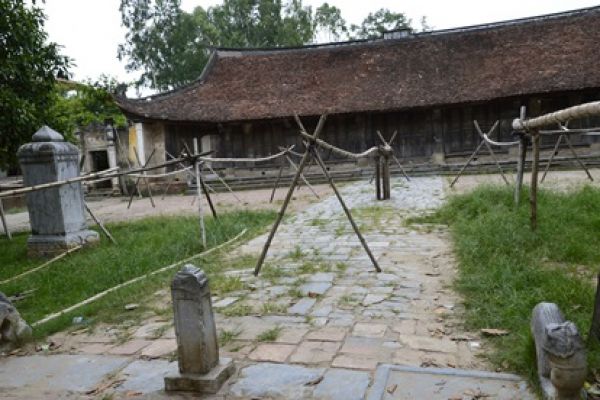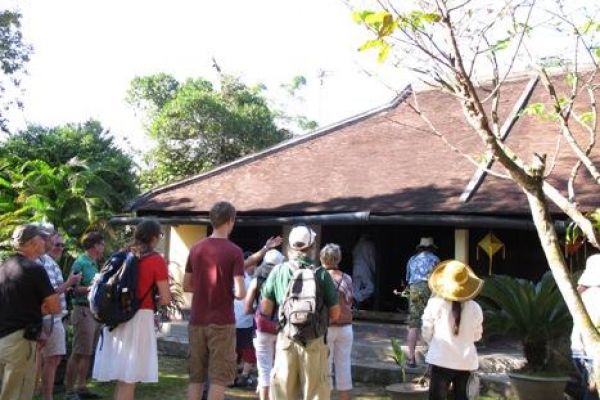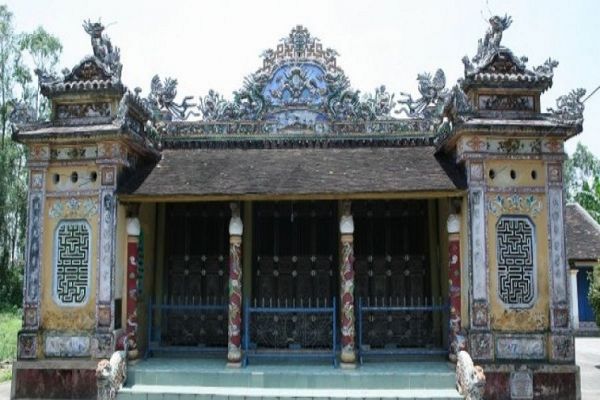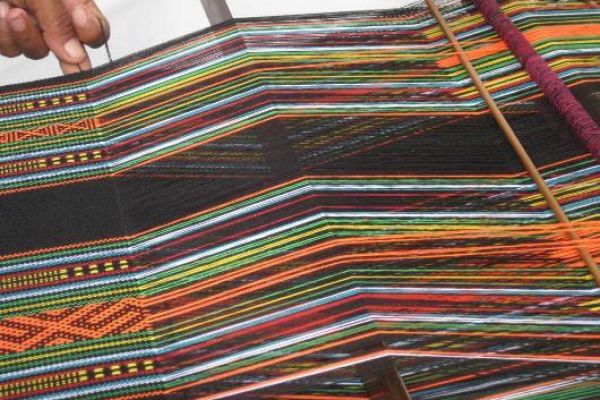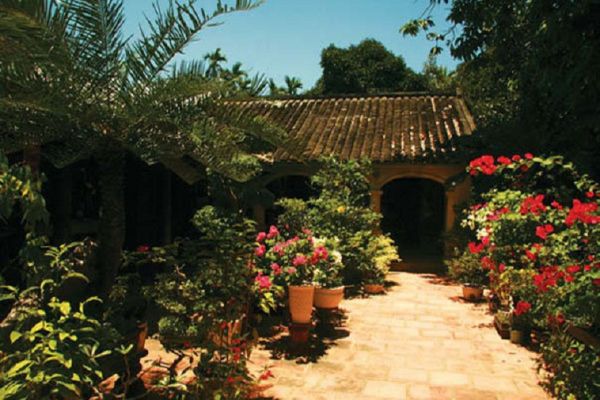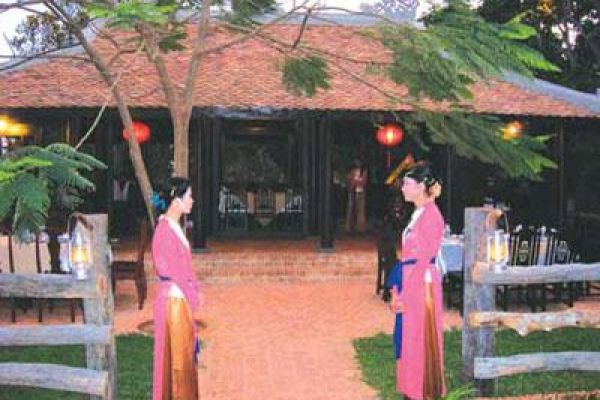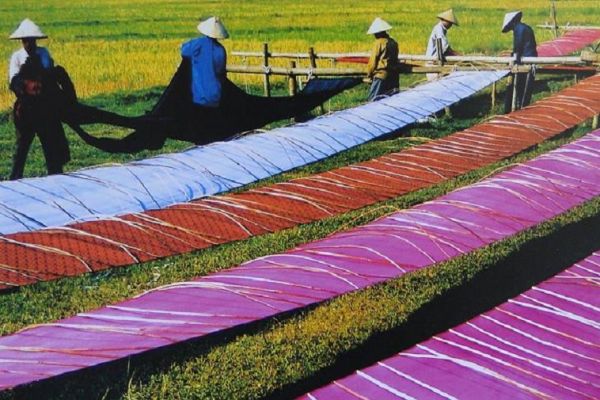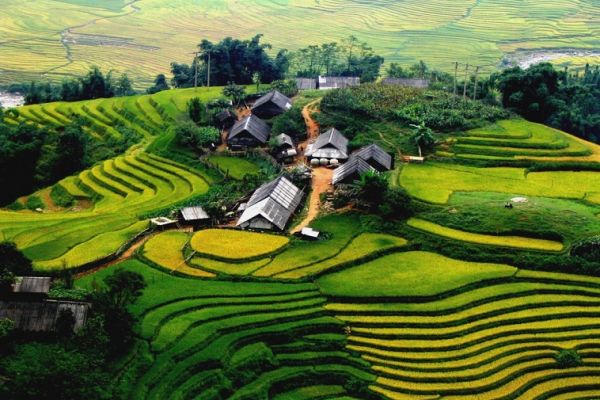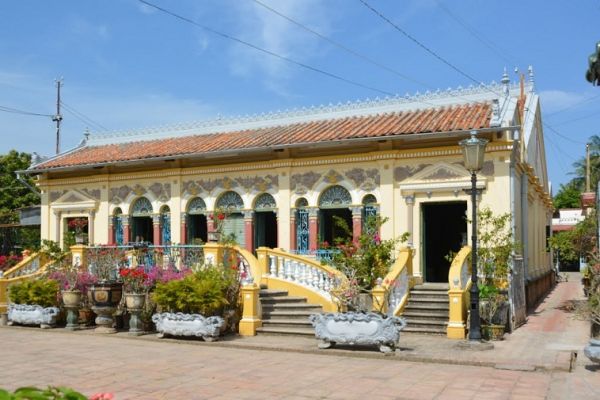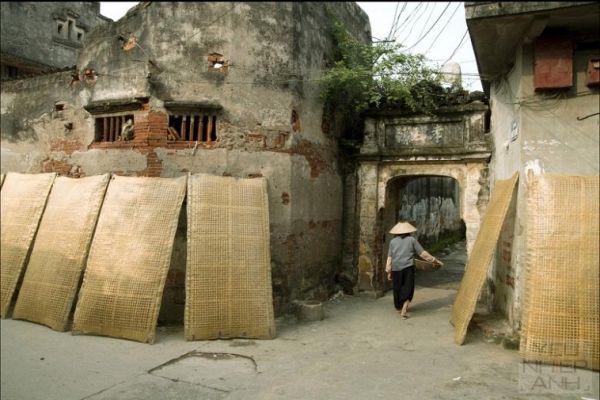About 20km away from the center of Hanoi City, Cu Da Village (Cu Khe Ward, Thanh Oai District) taciturnly situated by the peaceful Nhue River, has a long history of about 5 centuries, and remains the features of the Vietnamese ancient village.
Coming to Cu Da, tourists will firstly encounter old banyan trees situated by Nhue riverside. They have existed three for about a century, provided their shade for the kids to play marbles and other games in the hot summer days as well as for the female villager’s teashops. Tree branches rustle in the wind, birds singing in the early sunshine.
Old features infuse on every yard corner, every wall, and each veranda in Cu Da Village. Each alley forms a hamlet with a strange name, such as Som Hieu De (Dutiful Hamlet), Xom Con Coc (Forg Hamlet), Xom Quang Trung 1, Xom Quang Trung 2, Xom Dong Nhan Cat..Entering the house entrance, visitors will feel like wandering in the ancient living atmosphere, sights of the past and the old memories. The stained entrance roof is covered with green moss and wild grass, the features of time going by for a century. On the walls, pieces of mortar have fallen out to show off red old bricks inside.

The ancient house in Cu Da was built in three architectural styles: Vietnamese style, French style and combination of them. Especially, the villas were designed sophisticatedly with cleverly carved features, reliefs and decoration details in French style; the façade was encrusted with stone or porcelain; the floor was tiled with marble.
According to Cu Khe Wards statistic, before 1975, there were over 1,000 ancient houses; 25 of them are in 2-storey French style; the rest is the combination of Asian- European style with the typical feature of Northern Vietnamese Delta, so called “ dai khoa” houses.
It’s remarkable that the common point at the house in Asian- European combined style is the vault of the wall with flowers on the front side; on the second floor, there is normally balcony while the construction of the first floor is typically influenced the ancient architectural style in northern Vietnam with three- compartment structure and tiled roof.
In middle the village square, there is a flag pole built in 1929. At the time, just a few villages had the flag pole like that. At present, the festive flag still flies on top of the pole. 1929 also marks the year when Cu Da village had electricity for lighting for the first time.
There are two unique construction works that tourists cannot see at any- where else’ two about 100-year-old houses that are currently the offices of People Council and Peoples Committee of Cu Khe Ward, where hold the meetings on villages general issues before the August Revolution. Moss, fungus, stain existing on the old walls and eaves become the historical witness of the village.
Besides ancient houses and trees, other cultural heritages such as temple, the communal house of the village, pagodas, shrines in Cu Da are the invaluable properties. Cu Da Temple has been preserved as a precious historical heritage, including a pair of palanquin over 300 years of age; according to the legends it used to belong to King Le Canh Hung. Patterns of dragon and phoenix were carved on the temple walls and the worship palanquin. The temple has been recognized as the national heritage. The bold feature can be seen at Cu Da Pagoda is a pair of elephant, of young lion and dragon, all in stone, placed in the front yard, under the old banyan tree. There is also an old bell hung under a winding holder carved with patterns of phoenix and dragon.
Together with the Duong Lam ancient village, Cu Da village remains the typical atmosphere of the ancient culture in Northern Vietnam Delta.
Translated by Nguyen Hao
Source: DNSG


